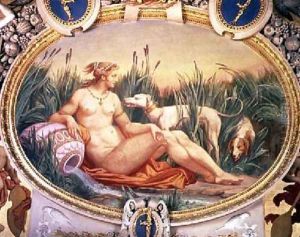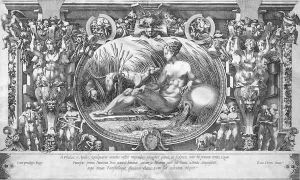& Boyvin, Rene Milan, Pierre Paintings
René Boyvin was a French engraver, born around 1525 in Angers, France. His exact birth date is not recorded, but his life and work fall into the heart of the Renaissance period, a time when art, literature, and science were flourishing in Europe. Boyvin was primarily known for his skill in engraving, a form of printmaking that was highly popular during the 16th century. Although not as widely recognized as some of his contemporaries, Boyvin's contributions to the art of engraving were significant, particularly in the dissemination of Renaissance art styles across France and beyond.
Boyvin's career was largely influenced by the Italian Renaissance, as were many artists of his time. He is believed to have been a pupil of the Italian master engraver Marcantonio Raimondi, whose style had a profound impact on Boyvin's work. Through Raimondi, Boyvin was exposed to the works of the leading Italian artists, including Raphael, whose designs he often used as the basis for his engravings. This connection not only helped to shape his technical skills but also introduced Renaissance ideas and motifs into French art.
Throughout his career, Boyvin produced a wide range of engravings, from religious subjects to mythological scenes, often characterized by their intricate detail and the harmonious balance of their compositions. His works were not only appreciated for their artistic merit but also for their role in making the artworks of Italian masters accessible to a wider audience in France. Boyvin's engravings served as a medium through which the ideas and aesthetics of the Italian Renaissance were transmitted to the French artistic community, influencing the development of the French Renaissance.
Despite his contributions, much of Boyvin's life and work remain shrouded in mystery. Few of his original plates have survived, and many of his engravings are known to us only through later impressions. Nevertheless, his legacy lives on through these works, which continue to be studied for their technical prowess and artistic beauty. René Boyvin died in 1598, leaving behind a body of work that, while not as extensive as some of his peers, played a crucial role in the cultural exchange between Italy and France during the Renaissance.

